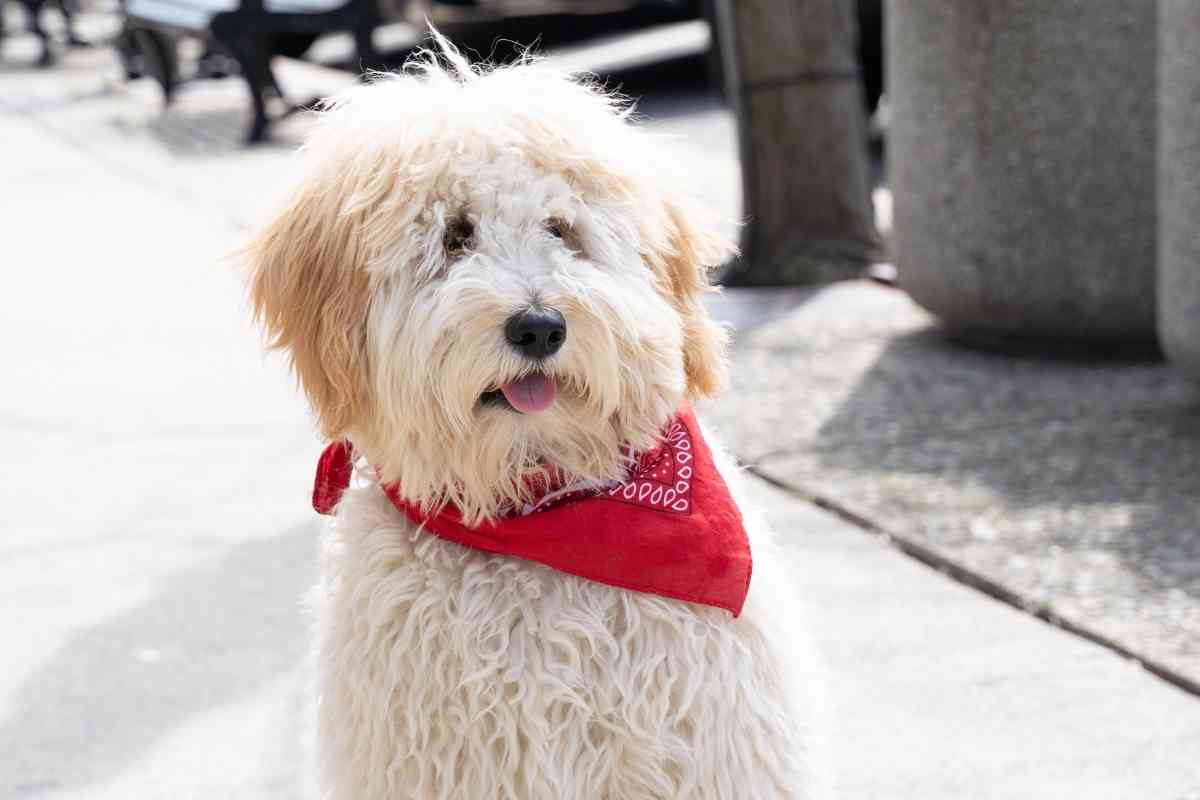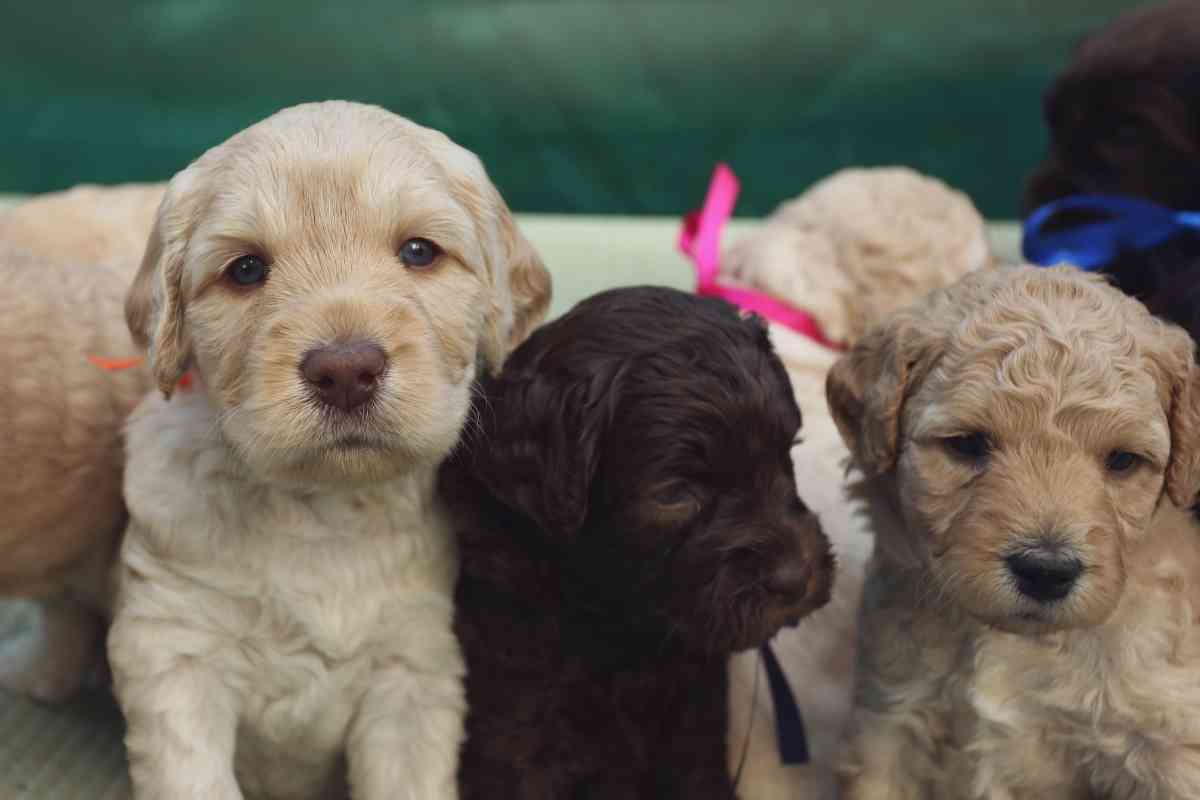Do Labradoodle Puppies Shed? 3 Proven Ways To Reduce Shedding
Labradoodles are the most popular alternative for allergy sufferers due to the widespread notion that Labradoodles do not shed. However, the puppies may occasionally shed a little bit, and you may notice it. This puts allergic dog owners in a difficult position regarding shedding. So, do Labradoodle puppies shed? Let‘s find out.

Do Labradoodle puppies shed?
Labradoodle puppies often lose their puppy coat between 6 and 12 months of age, depending on the coat type of the Labradoodle. Labradoodles lose their winter coat throughout the warmer months. You can control shedding by bathing your puppy and providing proper nutrition.
While these dogs shed, they will not cover your home with fur. So, the shedding should not cause panic because it is normal and inevitable but can be reduced in several ways. Wash your puppy regularly, feed them proper nutrition and ensure they are comfortable.
After more profound advice from certified vets and dog encyclopedias, we compiled this guide. It will help you determine whether Labradoodles shed, what determines their shedding, and how to reduce it. Read on to learn more about Labradoodle puppies.
When Do Labradoodles Shed Their Puppy Coat
Labradoodles are hypoallergenic and allergen-free pups, which explains why there is a widespread belief that these pups do not shed. (Hypoallergenic dogs shed little to no fur, drastically minimizing the likelihood of an allergic reaction.) Contrary to the prevalent belief, Labradoodles do shed their coats.
Labradoodle puppies usually shed their puppy coat between 6 and 12 months, subject to the Labradoodle’s coat type. Labradoodles lose their winter coat during the warmer months of the year; you may likely see frequent shedding during these times.
While these dogs shed, it’s not the kind of shedding that leaves your home covered in fur. You will only notice the shedding when combing or brushing the pawed buddy. By brushing your Labradoodle, you typically remove the puppy coat and make way for the newly emerging adult coat.
Labradoodles complete shedding their puppy coat depending on when the shedding process begins.
Types of Labradoodle Coats

How long it takes a Labradoodle to shed depends on the sort of coat they possess. There are only three distinct variations of Labradoodle coats. However, some may argue that there are more since Labradoodles are available in various colors.
These costs include:
Hair
A Labradoodle puppy does not usually have a substantial “hair” coat at birth. The hair coat will appear when the Labradoodle is approximately 12 weeks old.
A hair-coated Labradoodle is less frequent than the other coat types and resembles their Labrador parent more closely. Typically, these Labradoodles have a disheveled appearance.
The muzzle of a Labradoodle with hair is sleek and straight. Although they are not suited for households with allergy sufferers, these canines are suitable for individuals who lack the time for daily maintenance.
This breed is quite similar to the Labrador retriever, which explains why they are the least hypoallergenic
Wool
The Labradoodles with wool coats, sometimes known as “curly” Labradoodles, are the second-most popular breed after those with fleece coats.
There are three distinct types of wool coats:
- Original wool- comparable in texture to lamb’s wool, thick and curly.
- Cotton wool- curly or straight fur that is incredibly dense
- New or loose wool- lamb’s wool coat texture that is spiral
The Labradoodles’ genetic makeup dictates how firmly the curl will curl. This pup is also an excellent option if you’re looking for a dog that won’t aggravate your allergies.
However, although this coat sheds the least, you should still take your pet to the groomer.
Fleece
Also commonly referred to as “shaggy,” these Labradoodles are the most common type. The fleece coat Labradoodle is the offspring of a Labradoodle and a Poodle. The region around the eyes of this canine usually displays kemp, coarse hair.
The popularity of this pup is mainly attributed to their low shedding character, which is best for people prone to allergies, and their minimal maintenance.
Your dog’s fleece coat comes in two types:
- Normal fleece has a soft texture and may undulate or spiral loosely
- Microfine fleece is fine and silky and can be easily matted
How To Reduce Shedding In Labradoodles Puppies
While shedding is normal and is no cause for alarm, here are a few ways to reduce shedding in Labradoodles:
Ensuring Your Dog Gets Proper Nutrition
A poor diet or lack of supplements can lead to excessive shedding in Labradoodles. Your Labradoodle’s skin and coat mirror the nutritional supplements they consume. Omega-3 unsaturated fats reduce Labradoodle shedding by encouraging a healthier coat and skin.
Washing Your Dog Frequently
You can remove the dead fur that will fall off during shedding by bathing your dog. Bath your dog at least once per month during cold seasons and twice during warmer seasons.
Ensure Your Dog Stays Stress-free
Your dog’s body will react in various ways under extreme stress. Your Labradoodle’s unusual shedding could be a sign of unnecessary stress. Establishing a routine for your Labradoodle will reduce unexpected anxiety. Provide your Labradoodle with a daily schedule for walking, eating, and resting if they are experiencing stressful life changes.
Regular petting also significantly reduces the amount of stress your Labradoodle has. But don’t pet your canine best friend too much as this may make them too dependent on you.
Why Is Brushing Important In Labradoodles?
The majority of dog breeds with fur are prone to excessive shedding. The situation is different with Labradoodles. The only time a Labradoodle puppy will shed is when its coat is brushed to remove the old puppy coat and promote the growth of the new coat.
Be sure to
Choosing the correct
If you do not frequently
A standard
Remember to promptly remove all old, dead skin, which can accumulate beneath the surface and cause a serious mess. Send your dog to the vet immediately if you observe excessive shedding, bald spots on the puppy’s skin, irritation, persistent scratching, or dry or brittle fur.
The Labradoodle Which Sheds the Most
The amount of hair a Labradoodle may lose or shed is partially determined by genetics. The F1, F2, or F3 Labradoodle Generation is the most likely to shed since they have a 50% chance of inheriting the Labrador Retriever’s DNA, which results in a straight and flat coat.
However, second (F1b), third (F3b), and multigenerational Labradoodles will shed less than first-generation Labradoodles (F1).